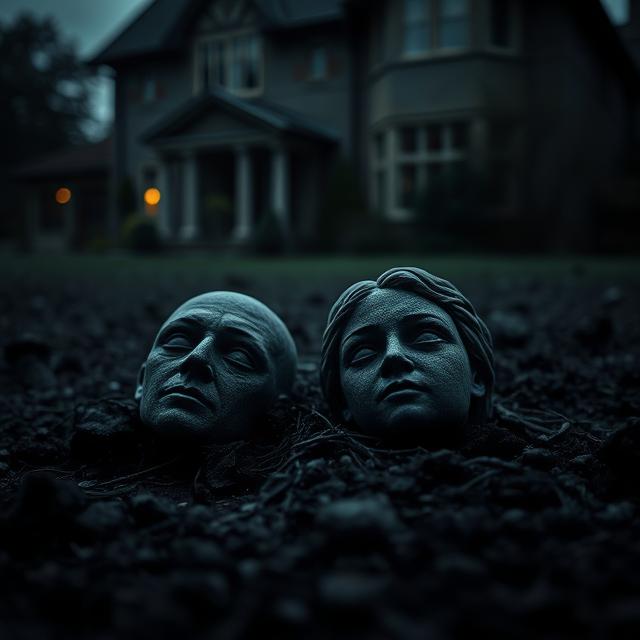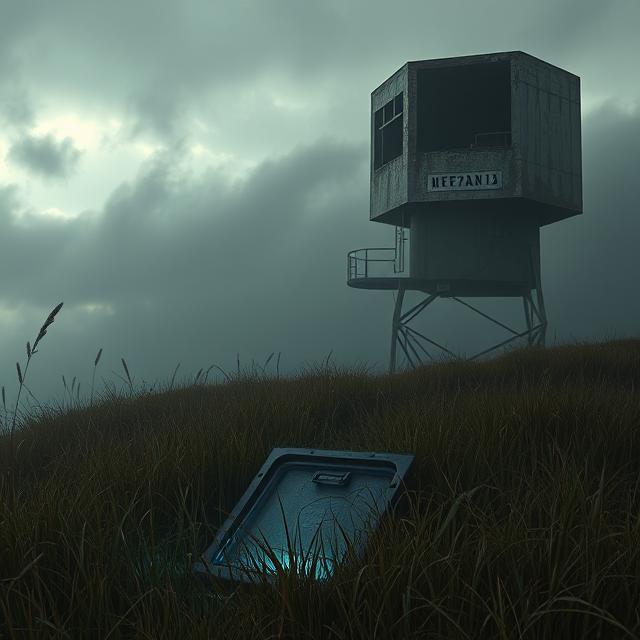Let’s delve into the peculiar and unsettling case of the Hexham Heads, a mystery that pits alleged ancient curses and genuine paranormal activity against scientific skepticism and potential psychological phenomena. This article will explore the strange discovery of these stone effigies, the terrifying events they purportedly unleashed, and the enduring debate over whether they were truly haunted artifacts or the center of a cunning hoax.
In the tranquil, ancient landscape of Hexham, Northumberland, England, where Roman history and Druidic lore whisper from the very stones, a bizarre and profoundly unsettling mystery unfolded in the early 1970s. It began with the seemingly innocuous discovery of two small, human-like stone heads unearthed by two young boys in their garden. What followed, according to the family who found them and subsequent investigators, was a cascade of terrifying paranormal phenomena, culminating in a chilling encounter with a monstrous, half-human, half-animal entity. These “Hexham Heads,” as they quickly became known, ignited a fierce debate: were they ancient cursed artifacts unleashing a poltergeist haunting, or were they the catalyst for a psychological hoax, a collective delusion, or merely a series of misinterpretations? The enigma of the Hexham Heads continues to haunt the annals of paranormal investigation, their stony grins forever questioning the boundary between reality and the supernatural.
The story begins in the summer of 1972, in the garden of the Robson family home in Hexham. Two young boys, Colin and Leslie Robson, while digging near a sycamore tree, unearthed two small, curious stone heads. Each head was roughly the size of a tennis ball, made of a hard, greyish stone, and crudely carved with distinct, almost primitive, human-like features. One head depicted a male figure, the other female. Their eyes were large and staring, their mouths slightly agape. Initial excitement over a potential archaeological find quickly turned to unease.
Almost immediately after the heads were brought inside the Robson home, strange phenomena reportedly began. The first occurrences were relatively minor: unexplained noises, objects moving on their own, and a pervasive feeling of unease. The heads themselves were said to occasionally move when no one was watching, sometimes appearing in different rooms from where they had been left.
The activity escalated rapidly, evolving into classic poltergeist phenomena:
- Levitating Objects: Items around the house, particularly in the children’s bedrooms, were reported to levitate or be thrown across rooms by unseen forces.
- Unexplained Cold Spots: Sudden, localized drops in temperature would manifest, often accompanied by a sense of dread.
- Disembodied Sounds: Whispers, footsteps, scratching noises, and muffled thuds were heard throughout the house when no one else was present.
- Physical Disturbances: Beds would reportedly shake, furniture would creak, and doors would open and close on their own.
The focus of the activity seemed to be particularly intense around the two young boys who discovered the heads, and also around the heads themselves. The Robson family, initially skeptical, became increasingly terrified as the phenomena intensified. They began to believe that the stone heads were somehow responsible for the disturbances, acting as a focal point or a conduit for a malevolent entity.
The most terrifying and frequently recounted incident involved a monstrous apparition. One night, the children and other family members claimed to have seen a terrifying figure emerge from the darkness. It was described as a large, hairy, half-human, half-animal creature, like a werewolf or a beast-man, with glowing red eyes. This terrifying entity reportedly stalked the house, appearing in bedrooms and causing immense fear among the inhabitants. The appearance of such a creature, far beyond typical poltergeist activity, elevated the Hexham Heads case into something truly bizarre.
News of the Hexham Heads and the alleged haunting quickly spread, attracting the attention of local media and paranormal investigators. One notable figure who became involved was Dr. Don Robins, a chemist and parapsychologist. Robins initially visited the Robson home and experienced some of the reported phenomena firsthand, though he remained cautious in his conclusions.
Robins took the heads for scientific analysis. Initial examinations by geologists confirmed that the heads were indeed carved from local stone, but offered no further insights into their properties. However, a series of strange events occurred while the heads were in Robins’ possession. He reported that a cat belonging to his colleague reacted violently to the presence of the heads. More disturbingly, his own dog was reportedly thrown across a room and collapsed, seemingly in terror, after an encounter with one of the heads.
The theories attempting to explain the Hexham Heads phenomenon are numerous and varied, falling into categories ranging from the supernatural to the scientific:
Supernatural/Paranormal Theories:
- Ancient Curse/Residual Haunting: Given Hexham’s rich history, particularly its Roman and possibly ancient British/Druidic past, some believe the heads were ancient pagan artifacts, perhaps idols or burial effigies. Disturbing them could have unleashed an ancient curse or awakened residual energy from rituals performed long ago.
- Elemental Spirits: The heads could be conduits for elemental spirits or ancient nature deities disturbed by their removal from the earth.
- Poltergeist Manifestation: The activity aligns with classical poltergeist phenomena, often linked to adolescent energy or psychological stress. The heads may have merely acted as a trigger or a focal point for an existing psychic disturbance within the Robson household.
- Demonic/Malevolent Entity: The appearance of the half-human, half-animal creature suggests something profoundly sinister and possibly demonic, a malevolent entity drawn to the heads or the family.
Skeptical/Scientific Theories:
- Hoax or Prank: The simplest explanation is that the entire haunting was a hoax orchestrated by the children, or perhaps by an adult in the family seeking attention. However, the consistency of some experiences among different family members makes a simple hoax less likely for all phenomena.
- Psychological Factors:
- Suggestibility and Mass Hysteria: Once the initial strange events occurred and the heads gained a reputation, the heightened suggestibility within the family, particularly the children, could have led to a form of shared delusion or mass hysteria, where normal occurrences were misinterpreted as paranormal.
- Ideomotor Effect: Unconscious muscular movements could explain some instances of objects “moving on their own.”
- Pareidolia: The human tendency to see patterns or faces in random stimuli might have contributed to interpreting subtle movements or shadows as malevolent entities.
- Misinterpretation of Natural Phenomena: Drafts, structural shifts in the house, or even the sounds of nocturnal animals could have been misinterpreted in an environment primed for fear.
- Geological Anomaly: A less common theory posits that the specific stone of the heads, or some geological feature beneath the property, might have emitted unusual energies or magnetic fields that influenced the environment or the occupants. However, there’s no scientific basis for this to cause such diverse and intense phenomena.
The ultimate fate of the Hexham Heads themselves adds another layer to the mystery. Following the intense disturbances and the inability of scientists to explain the phenomena, the heads were eventually given to a local museum. However, even there, strange occurrences were reported, including one of the heads allegedly jumping off a shelf. Eventually, they were removed from public display and their current whereabouts are often debated, with some claiming they are lost or deliberately hidden.
The Hexham Heads remain a deeply unsettling case in paranormal history, precisely because it defies easy categorization. Was it an ancient curse brought to life by archaeological disturbance? Was it a powerful poltergeist phenomenon centered around the family’s unconscious psychic energy? Or was it a complex interplay of human psychology, suggestion, and perhaps a touch of deliberate mischief? The enduring mystery of the Hexham Heads, with their enigmatic origins and the terrifying events they purportedly unleashed, continues to echo from the quiet garden in Northumberland, a chilling testament to the unknown forces that might stir beneath our feet.
Want to explore the shadows even deeper? For more chilling cases like this, visit SinisterArchive.com, where the legends are real.




